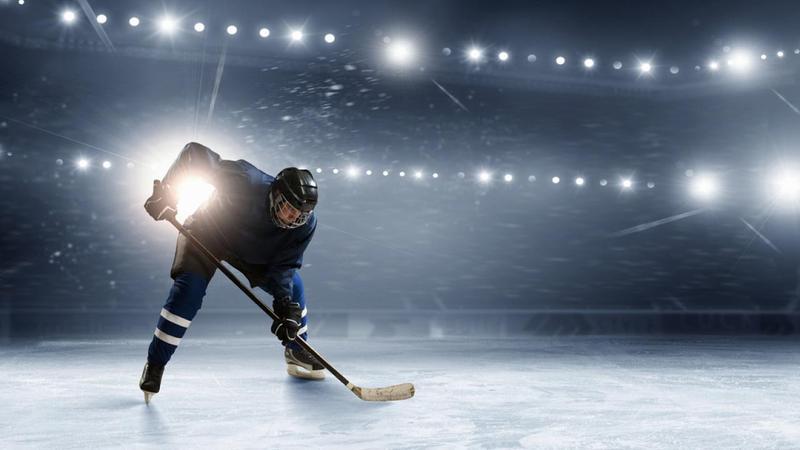Ice Hockey: Strategy Basics
Ice Hockey: Strategy Basics
Techniques
Speed is a fundamental necessity of the game. In the game’s initial days a group could pull off having a couple of moderate defensemen. However, challenges at all levels turned out to be fast to such an extent that hostile and protective jobs regularly are switched, and defensemen may end up at the bleeding edge of the activity. More slow players should have different ascribes to make a group; they should, for instance, have the option to check well, to keep different players from moving beyond them. Yet, since everybody in the group handles the puck sooner or later during a game, a premium is put on puck-conveying capacity. The man with the puck is in charge, and the play can go just so quick as he guides it. Focus Wayne Gretzky, while playing for the Edmonton Oilers, was the predominant scorer in the NHL for the vast majority of the 1980s because of his extraordinary puck dealing with and his exact shooting and passing.
On the off chance that a forward has the puck, the defensemen trail the play. In the event that a defenseman is driving a hostile push, called a “surge,” one of the advances backs him up. The resistance, then, endeavors to oversee the puck or to remove it. The most widely recognized route is for the protecting player to jab his stick at the puck. A safeguard may likewise hinder, check, or hit the player with his body, as long as his activity falls inside the guidelines characterizing permissible contact. Preferably, the shielding group’s defensemen lay back, riding their blue line, away from the sheets. They at that point can move to the middle to end an achievement or can drive a man into the sheets on the off chance that he endeavors to come the sides. On the off chance that the assaulting players find that they experience issues in stickhandling past the resistance, they may attempt a since quite a while ago shot “on objective.” They may likewise shoot the puck into the other group’s zone and pursue it, two assaulting players pursuing the puck—one to deal with the adversary, who makes certain to follow it, and the other to attempt to wrest the puck away. The third forward, then, takes up a situation around 20 feet before the objective, in the focal point of the ice, in a spot known as the “space.” In the opening he is in situation to shoot on the off chance that he gets the puck. The defensemen on the assaulting group take up situations on the blue line to keep the guarding group from getting a breakaway. Frequently the puck is passed to the defensemen, who shoot from the blue line, 60 feet out, from their position known as the “point.” Long shots once in a while go in, so defensemen attempt to keep long shots low, which gives the assailants a possibility at a bounce back.
Numerous fans don’t see objectives scored in hockey on the grounds that such countless go in on bounce back or redirections. While a shot is taken, no assaulting player might be in the goalie’s wrinkle, a square shape eight feet across and four feet out from the objective line; yet there is a lot of actual contact before the net, and the puck may ricochet off a skate, a stick, or any piece of the body. Any sort of shot that places in an objective is suitable, except if the shooter has raised his stick over his elbow; yet the puck may not be purposely kicked in, and it can’t be tossed in with the hand.
Perhaps the most uncommon exhibitions in hockey happens when a group that is following by one objective removes its goaltender from the net in the last seconds of the game. The goalie is supplanted by a forward with the expectation that the additional man on offense will give the group an opportunity for a tie, however this technique here and there brings about the group without the additional man effectively scoring what is called an “unfilled net objective.” Another uncommon and energizing play is the extra shot, which is considered when a stick is tossed to avoid a shot or when a player with an open way to the objective is pulled down from behind. The group against which the infraction was submitted chooses a player to skate unopposed to the adversary’s objective and make one effort to beat the goalie; this for the most part brings about a score for the shooting crew.
Directing
All NHL games and most worldwide games are heavily influenced by two arbitrators, two linesmen, and different off-ice authorities (most university games utilize just one ref). Refs are liable for calling punishments and are the last authorities of whether an objective has been scored, however the NHL permits authorities off ice to audit tape and decide the legitimateness of an objective. Linesmen call offsides and icing infractions; they may likewise stop play to illuminate an arbitrator that a group has an excessive number of players on the ice. In some university games in the U.S. two refs and no linesmen or two arbitrators and one linesman are utilized, one of the officials being the last referee of differences. The IIHF sanctions the two-official framework for games under the purview of public leagues. The objective appointed authorities are positioned behind each enclosure in a raised corner behind the loads up, and they flip a switch that stops the clock and triggers a red light when they see the puck cross the objective line. Different authorities are the punishment watch, the game watch, and the authority scorer, who credits players for objectives and helps and furthermore monitors the goalie’s recoveries, or stops.
Be the first to post a message!
